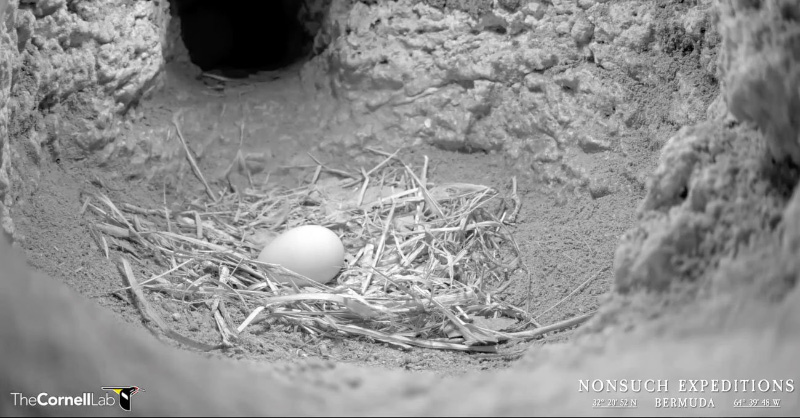Update On 2024 Cahow Breeding Season
The Nonsuch Expeditions website provided an update on the 2024 breeding season of the critically endangered Cahow, saying that it has “entered what is arguably it’s most exciting phase, with the return of the breeding pairs.”
Senior Terrestrial Conservation Officer Jeremy Madeiros said, “The 2024 breeding season of the Bermuda petrel or Cahow, which is critically endangered, one of the rarest seabirds on Earth, and nests only on Bermuda, has entered what is arguably it’s most exciting phase, with the return of the breeding pairs to lay and begin incubation of their single eggs.
“This breeding season actually began in late October and November, 2023, with the birds returning to their nest burrows on 6 small islands totaling only 22.4 acres in area at the east end of Bermuda, to re-unite after 6 months apart at sea, carry out courtship and nest-building activity and mate, and then fly out to sea for 4 to 6 weeks on what is called a “pre-egg laying exodus”. They then return at the beginning of January, often arriving within hours of each other back at their nest burrows.
“The weather conditions so far this winter has been unusually wet and windy, only enabling visits to the Castle Harbour Islands possible on 1 or 2 days of each week in between weather systems and the strong to gale-force winds that they often bring. Luckily, brief gaps between storm systems allowed us to visit the nesting islands twice in the last few days. On Thursday 4th January, I was able to visit Nonsuch Island with J.P. Rouja to check the Cahow nests at the “A” Cahow colony, where we confirmed that Cahows had returned to 4 nest burrows. In two burrows [R819 and R821] single adult Cahows were incubating the first confirmed eggs of the season, while in two other nests [R833 and R834] pairs of adult Cahows were together in the nests but had not produced eggs as of yet.
“On Saturday 6th January, we were joined by Lynne Thorne, who assisted us in taking notes and photographs. We were able to confirm that Cahows had returned to two more nest burrows at the A colony, the R822 nest where the female adult was incubating a newly laid egg, and at the R829 nest, where the male bird was also incubating an egg, which is the first one produced by this new nesting pair, which only got together in early 2023. In addition, returned Cahows were also found in two nests at the second, “B” Cahow nesting colony on Nonsuch, a single recently returned young Cahow in the B8 nest, and the other a male adult incubating an egg [also the first egg produced by this new pair], that when it was candled with a flashlight, revealed a developing embryo that appeared to be about 7 to 8 days old [see attached photos].
“Finally, on the night of the 6th-7th January, the female Cahow using the CahowCam 1 [R831] nest burrow returned from the open sea to the nest, captured by the livestream video camera installed there. After arriving at 11.05pm and spending the next hour re-arranging the nest material, the female laid her large, single egg at 12.05am, and promptly begin incubating the egg. Then, as to emphasize how well-synchronized these birds are after being separated by hundreds of miles at sea for the last 5 weeks, the male bird arrived at the nest at about 1,49am, with the birds mutually preening each other [known as allopreening] and the male trying to convince the female to relinquish the egg so he could begin his incubation “shift”.
“For the moment, he has been unable to convince her as of yet and the female was still incubating the egg!
“This brings to 9 the number of Cahow nests on Nonsuch Island with returned Cahow as of the 7th January, out of a total of 40 on the island. We will be reporting on the progress of the 2024 Cahow breeding season as we are able to get out in the continuing stormy weather pattern.”
Read the full story here on the Nonsuch Expeditions website.
Read More About
Category: All, Environment



